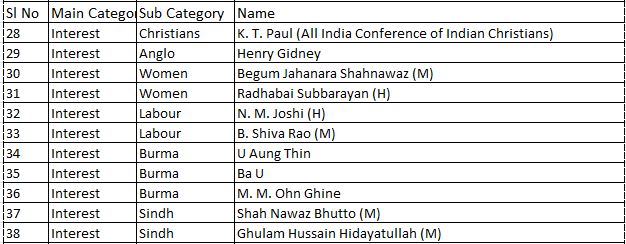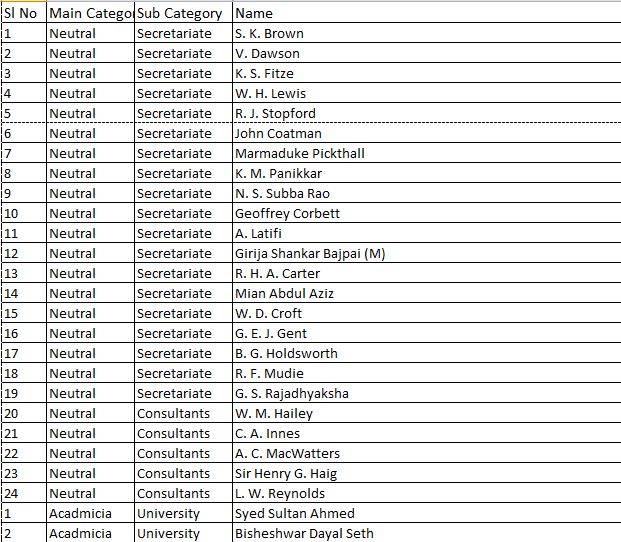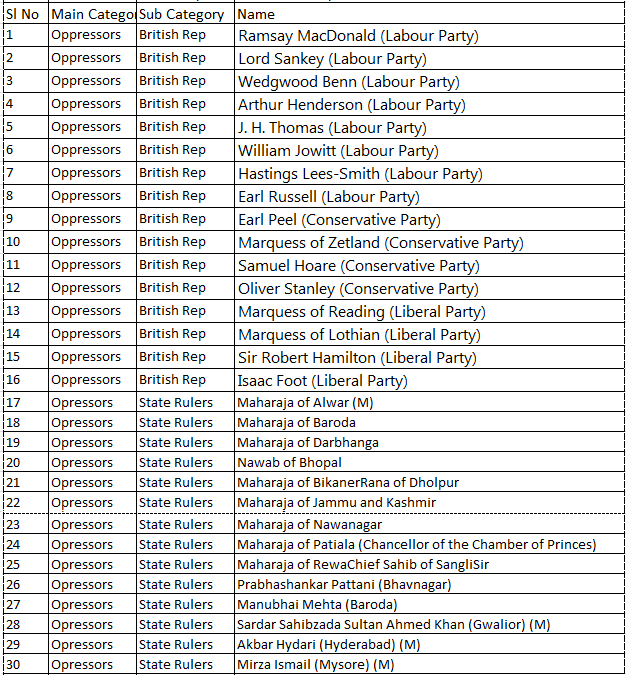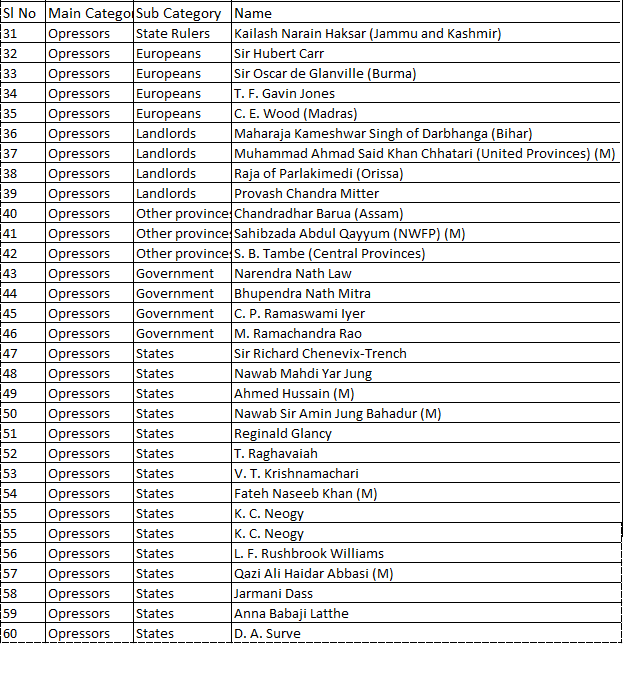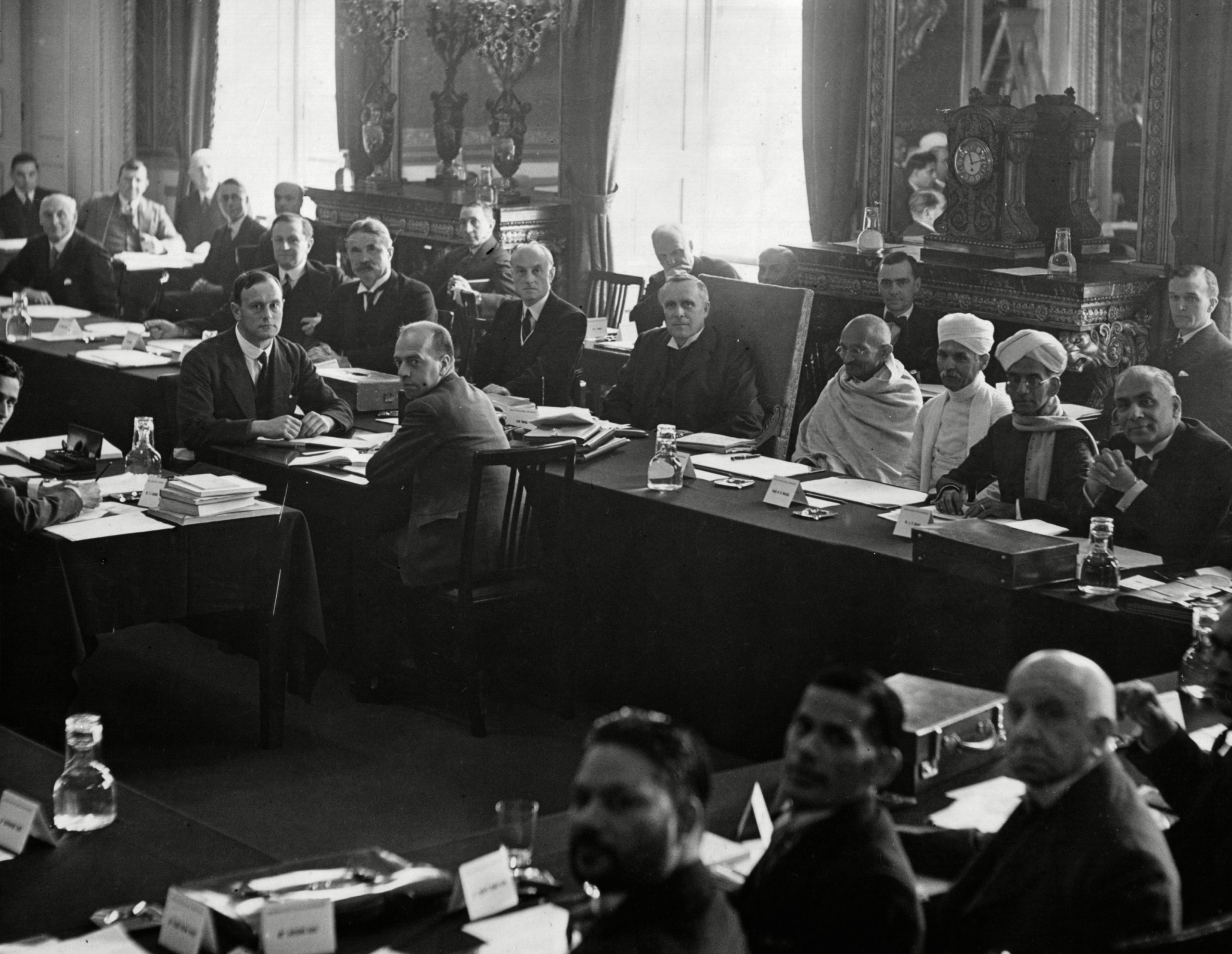An Analysis of First Round Table Conference
The ocassion of 155th birth anniversary of Mohandas Karamchand Gandhi, who is also addressed as Mahatma Gandhi as he was awarded this title by the British on 2 September 1938 we decided to post a series of posts that depict the life and actions of Gandhi ji.
Some irrational and irresponsible people also address him as the father of the nation, the father of motherland that was born in time immemorial and, the land that we call as Bharat Mata. Let us have an overview of major events of his life.
Major Life Events of Gandhiji
Non-Cooperation Movement (1920-1922)
The Non-Cooperation Movement, initiated by Mahatma Gandhi, was a significant phase of Indian history, particularly in the context of the Indian independence struggle against British rule. It sought to resist British authority through non-violent means, urging Indians to boycott British products, institutions, and honours. The movement gained massive nationwide support but was called off abruptly by Gandhi in 1922 following the Chauri Chaura incident, where a violent clash led to the death of police officers. Its suspension caused a split within the Indian National Congress but laid the groundwork for future protests.
Civil Disobedience Movement (1930-1934)
Launched by Gandhi in 1930, the Civil Disobedience Movement was a pivotal moment in the Indian independence narrative. It started with the historic Salt March, where Gandhi and his followers made salt at the coastal village of Dandi, defying the British monopoly on salt production. This act of non-violent civil disobedience sparked widespread protests across India, challenging various facets of British law. The movement was temporarily halted in 1931 for the Gandhi-Irwin Pact but resumed in 1932 when the British failed to meet national demands, eventually leading to significant political concessions.
Quit India Movement (1942)
The Quit India Movement, or the ‘August Movement,’ was launched by Gandhi in 1942 in response to the failure of the Cripps Mission to secure Indian support for the British war effort in World War II. Gandhi’s call for an orderly British withdrawal led to a mass protest and the largest movement for Indian independence, characterized by widespread acts of civil disobedience and sabotage, a significant event in Indian history. The British responded with severe repression, detaining thousands and suppressing the movement, but it significantly weakened British control and resolve, marking a crucial step towards independence.
Khilafat Movement (1919-1924)
The Khilafat Movement was a pan-Islamic, political protest campaign launched by Muslims in British India to protect the Ottoman Caliphate during the aftermath of World War I. It ran parallel to the Non-Cooperation Movement and represented a unique instance of Hindu-Muslim unity against British rule, as Gandhi linked the movement with the struggle for Indian independence. The movement faded after the abolition of the Caliphate in 1924, leading to disillusionment among its Muslim supporters.
Champaran Satyagraha (1917)
Champaran Satyagraha marked Mahatma Gandhi’s first active involvement in Indian politics and the beginning of his unique method of non-violent protest. It was a farmer’s uprising that took place in Champaran district of Bihar, where Gandhi protested against the oppressive plantation system and the exploitation of farmers forced to grow indigo under British policies. The success of this movement led to the alleviation of the conditions of the farmers and established Gandhi as a prominent figure in the national movement.
Ahmedabad Textile Workers’ Strike (1918)
The Ahmedabad Textile Workers’ Strike was another significant early instance of Gandhi’s experiment with non-violent protest. It took place in the textile mills of Ahmedabad, Gujarat, where workers demanded better wages to cope with the rising cost of living. Gandhi intervened as a mediator but eventually sided with the workers, leading a hunger strike that resulted in the employers conceding to the demands of the workers. This event is notable for introducing the concept of arbitration and non-violent protest in labor disputes.
Harijan Movement
The Harijan Movement was initiated by Mahatma Gandhi in the early 1930s to improve the lives of the “untouchables,” whom he termed “Harijans,” meaning “children of God,” in British Indian history. The movement aimed at eliminating the social injustices and discrimination faced by the Dalit community, advocating for their rights to access public spaces, temples, and water sources. It also emphasized the importance of providing education and economic opportunities to uplift the Dalit community, reflecting Gandhi’s broader vision of social equality and harmony
Round Table Conferences: Unveiling Shadows in Gandhi’s Legacy
In our exploration of pivotal events in Indian history, particularly in the context of British Indian history, we will not only reflect on landmark movements such as the Non-Cooperation, Civil Disobedience, and Quit India Movements but also cast a spotlight on the Round Table Conferences. These conferences, pivotal in the dialogue between British authorities and Indian leaders, offer a nuanced view of Gandhi’s diplomatic efforts and strategies. Alongside, we delve into lesser-discussed aspects of Gandhi’s life, uncovering the complexities and controversies that have been overshadowed by his monumental legacy. By examining the benefits reaped by certain individuals from these historical acts, we aim to present a more holistic view of Gandhi’s impact on India’s struggle for independence.
In order to understand Gandhi’s involvement in the Round Table Conferences, it is essential to first understand the agenda of these conferences and the issues they aimed to address.
Agenda For Round Table Conferrence
The first round table conference inaugurated on November 12, 1930 by British Kind George V, held at London, was, presumably, to resolve issues that caused agitation amongst Indians for which they had to resort to Civil Disobedience Movement. The primary agenda of the First Round Table Conference held in London in 1930 was to discuss constitutional reforms for India and to find a common ground between various Indian political parties and British authorities. The main points of discussion included:
Franchise: Determining the structure of the franchise (who could vote) in a future Indian constitution.
Communal Representation: Discussing the issue of communal representation, particularly regarding Muslims, Sikhs, and other minority communities.
Provincial Autonomy: Examining the extent of autonomy to be granted to provinces within India.
Federal Structure: Debating the framework for a federal structure of government in India.
Financial Arrangements: Discussing financial relations between the central government and provinces.
Safeguards for Minorities: Addressing the concerns and safeguards needed for religious and minority communities in India.
Role of Princes: Determining the role and representation of the princely states in a future Indian government.
Stated Goals for Civil Disobedience Movement
The goals set for Civil Disobedience Movement are briefly listed here:
Protest Against the Salt Laws: To get the salt law and other such laws repealed.
Demand for Self-Governance: To get freedom from British Rule.
Failure of Previous Agitations: The failure was a result of aborting the agitation without rationales.
Economic Hardships: High taxes were levied by local rulers and the British caused he hardships.
Protest Against Unjust Laws: There were a number of other laws that were meant to expose local population to more economic hardships.
Unity and Mass Participation: Gandhiji wanted to unite the divided society.
International Attention: It was assumed that International community would pressurize British to Budge and agree to the demands.
Pressure on the British: Movement would pressurize British to free India.
First Round Table Conferrence Agenda Vs Goals of Movement
A quick look at the agenda of first Round Table Conference and read together with the goals of Civil Disobedience Movement shows that
There was no relationship between the two. The matter does not end there, but the agenda has included agenda items that were detrimental to the very existence of Bharat. Four of the seven agenda items are divisive.
The Movement and the conference were ill intentioned and were meant to cause divisions within Indian society. Let us seek more information to verify this statement.
One cannot expect anything that would be anywhere near the real goal of all movements, that is, to secure independence for the country.
List of Participants of Round Table Conferrence
The list of participants is placed in the five images herein.
Now, let us review the list of participants’ of first Round Table Conference. The participants included
The Total number of participants were 124 with following categories:
Oppressors:
Oppressors are the class of people on account of whom the country was being looted and ordinary people suffered.
They consisted of British, the then rulers, organisations associated to the rulers, zamindars/ Landlords, Europeans and Indian Government and their staff.
At least 60 persons associated with oppression of Indian public were participants in the round table conference.
Interest Groups:
Interest groups were those people who represented a particular class or group or religion to speak on behalf of or help the class get maximum benefits compared to other competing classes or groups. They were based on religion, caste, region, haves and have nots and so on. For example, women would represent only women, Sikhs would only represent Sikhs etc,
Number of people representing interest groups who participated in the first round table conference were 38.
Neutral Participants in Round Table Conferrence:
Consultants and secretarial staff may be considered as neutral even though they will have a bias towards their master. Total number of neutral staff who participated in the first Round Table Conference were 24 including 5 consultants and 19 secretarial staff.
Though academicians were also interest groups of sorts as seen from the names of participants, but for discussion sake we will consider them as neutral. 2 academicians participated.
Those representing the Interests of all Indians:
There was not a single person representing Indians.
Analysis of Participants of Round Table Conferrence
Representation was not fair and equitable
Please refer table 2 that represents the demography as per census data 1932/32
By superimposing the census data on the participants list of interest groups we deduce the following
Parsis with 0.03% population had 3 representatives, about 8% of the Interest: Groups
Muslims with 24% population had 9 representatives, about 22% of the Interest: Group
Hindus with 62% population had 3 representatives, about 8%, totally under represented
Sikhs with 1.2% population had a representation of 5.3% representation in Interest: groups
Buddhists with 3.6% population were not represented.
Tribals with 2.4% population were not represented.
Other minor religions with 0.16% population were not represented.
Counter argument
There may be an argument that Interest Groups such as depressed or liberals etc were also Hindus, we need to have a deeper look to find out the reality
- First point is that they were meant to represent a specific class and, so their statement on Hindus issues would not have much value.
- Second point is that the total number of Hindus representing Hindu Groups were 15 against total 13 Muslims and 10 other groups. This shows that Hindus had a representation of 38% against Muslims, 34%. The ratio of population was 68% to 22%.
The above analysis clearly displays the ill design of the British rulers.
Conclusion
The data indicates that the participants were selected by the British to perpetuate their interests for the foreseeable time. It also shows that the participants were so addressed that they do not speak on behalf of Bharat as a whole.
The representation to Muslims was far more than the fair share according to the population of 22% and Hindus were highly under represented, only 8% against a population of 68%. This was meant only to give extra rope to them to partition Bharat as was proved later.
It is also easy to relate that, participating in a conference so designed as to divide Bharat on communal lines was nothing more than a suicide.
With an understanding of the participants and their interests, we can now assess the outcomes of the First Round Table Conference and evaluate its effectiveness.
Outcome of First Round Table Conference
Outcome of a meeting will be as good as the participants. British had prepared the participants list with ulterior motive not to cede anything. And they got the same results. Here are some key outcomes and observations:
Representation:
The conference provided a platform for various Indian leaders, including representatives from different political parties, princely states, and communities, to express their views on constitutional reforms and India’s future political structure.
Lack of Consensus:
There was a lack of consensus among the Indian participants on many crucial issues, including the demand for complete independence. While some leaders, like the Indian National Congress, advocated for dominion status and self-rule within the British Commonwealth, others, such as the Muslim League, were cautious and sought safeguards for minority rights.
British Attitude:
The British government, represented by officials and politicians, listened to the Indian leaders’ demands but did not commit to specific proposals during the first conference. The British authorities were cautious about granting too much autonomy to India and sought to maintain control over key matters.
Communal Representation:
The issue of communal representation and safeguards for religious and minority groups was a significant point of discussion during the conference. The British government recognized the need to address the concerns of various communities but did not make concrete decisions at this stage.
Continuation of Discussions:
Despite the lack of immediate agreements, the conference set the stage for further negotiations and discussions on constitutional reforms for India.
Significance:
The conference helped the British to create a toolkit to find out how they can divide Indian society and how the political environment in the country allowed them to have their way to make the application of tools a success.
In summary, while the First Round Table Conference displayed the British and rulers and Indian political leaders worked together to divide the country on communal lines. Subsequent conferences and negotiations would build upon the discussions and proposals presented during this initial meeting so that British could perpetuate the ill rule.
Feature Image: Click here for viewing the image. [Credit https://www.wikipedia.org]

